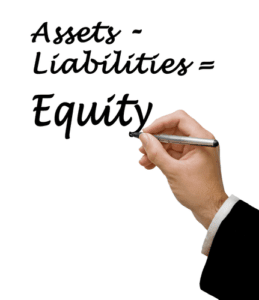The integration with Patriot’s payroll application is a definite plus, but the accounting side lacks depth in areas like contact records, inventory, and time tracking. Its price, voluminous support, and usability make it a great choice for a novice or a small start-up. Cash flow management is particularly crucial for startups, where funds are often tight.
You’re Anticipating Some Serious Growth
They may DIY their books, but should work with a CPA firm to file taxes and ensure state and local tax compliance. VC-backed businesses typically choose to outsource their bookkeeping and tax preparation/compliance to experienced CPA firms. Online accounting firms generally offer a suite of services designed to help businesses manage their finances. This can include bookkeeping, payroll, tax filing, CFO consulting, financial forecasting and more. Some accounting firms offer these services as bundled packages, while others allow customers to select the services they need on an a la carte basis. The services are delivered via a secure online platform and can be accessed from any device with an internet connection.
When do I need a small business accountant?
Along the top of the interface is a menu with options such as “business,” “accounting,” “projects” and “contacts.” When you click a menu option, you are given a list of options. For example, when you click “projects,” you are given the option to go to your list of projects or a report of staff cost rates. With Zelt you can automate payroll calculations and sync with HMRC, your pension provider and accounting software in one go. All you need to do is execute salary and HMRC payments, which you can do directly from within Zelt, too. And if you later decide you’re ready to make the move to the cloud, Sage offers cloud solutions as well.
The most experienced
When it comes to raising funds, whether it’s a bank loan, venture capital, or government grants, a startup will need to present its financial position clearly and convincingly. An accountant can assist in preparing the necessary financial reports and business plans, providing potential investors with a clear picture of the startup’s financial health and future prospects. In the fast-paced and competitive world of startups, an accountant plays an instrumental role, acting as a linchpin for financial management https://thecoloradodigest.com/navigating-financial-growth-leveraging-bookkeeping-and-accounting-services-for-startups/ and business growth. More than merely managing books or preparing taxes, an accountant’s role in a startup is multifaceted, covering everything from financial advice and forecasting to strategic planning and compliance. Enterprise resource planning (ERP) software includes all the features of accounting software, plus additional features such as CRM, inventory management and project management. ERP software is typically used by larger businesses while accounting software is more suited for small businesses.
How much should a startup pay for accounting?
- From there, I could click “+New Project” at the top of the resulting screen and fill out a simple form to add my new project.
- Businesses seeking a highly adaptable accounting solution that offers a precise and detailed overview of their finances should consider ZarMoney.
- An accounting firm is fully staffed with experts to offer bookkeeping and accounting services for your business.
- Scaling a startup is hard work – but scaling financial and HR backend systems shouldn’t be.
- Uncomplicated navigation, an attractive, intuitive UI, and exceptional mobile access add to its appeal.
I signed up for a free trial of FreshBooks’ accounting software and tested it on a Mac laptop using the Safari browser. All action items were clearly labeled and I was walked through how to complete all tasks. I found the software to require a small learning curve, particularly in terms of finding needed features. Features were listed on the left-hand menu once I signed in to my account. Because many features had submenu items, it was not always instantly clear where to go to access needed features. Moreover, I had to click around to learn how to access convenience features that made my user experience much easier, such as the “+” button at the top of my dashboard that can be used to access common action items.
You Can Add Services as You Need Them
- Read on to discover the perfect accounting firm for your small business.
- With a clear interface and features such as easy invoicing, expense tracking and timekeeping, users can navigate their financial tasks without a steep learning curve.
- She’s well-versed in the intricacies of LLC formation, business taxes, business loans, registered agents, business licenses and more.
- After evaluating accessibility, entrepreneurs and businesses should assess technological competence in evaluating a firm.
Beyond just creating budgets, your accountant can help you with forecasting, analyzing key performance indicators (KPIs), and developing a financing strategy. Your accountant can help look at the “big picture,” examining how all your financials are interrelated and affect your company. And in today’s higher interest rate environment, our finance and accounting teams have been helping clients think about safe ways to get some yield out of their cash positions. All online accounting services simplify the accounting process, but there will undoubtedly be times when you have questions. Some apps provide context-sensitive help along the way and a searchable database of support articles.
accounting basics every startup needs to track
Furthermore, the cost of the advanced services and add-ons can be difficult to estimate without getting in touch with a sales representative. Nonetheless, if you’re looking for the highest quality and most comprehensive service offered by an online accounting firm, then inDinero is an attractive option. Bookkeeper.com’s cheapest virtual bookkeeping service starts with bookkeeping basics, like preparing key financial statements. From there, you can add comprehensive accounting, payroll, and tax services as needed. Bookkeeper.com manages your accounts using QuickBooks Online (or QuickBooks Desktop, if you prefer).
More complex companies can add advanced tools that include projects and proposals, mileage and time tracking, and reports. Accounting software helps small business owners track their financial accounts, income and expenses, prepare for tax season and keep tabs on financials easily. For many small businesses, software is the more affordable alternative to hiring an accountant, a bookkeeper or a large firm to manage their accounting, tax preparation and payroll processes. However, with so many options on the market today, choosing the right solution can be a challenge. To help, I’ve narrowed in on the best accounting software for a variety of small businesses.
This adaptability extends to bank connections, integrating with over 9,600 financial institutions across the U.S. and Canada. This ensures that businesses have a singular view of their finances, with the ability to review, edit and reconcile records efficiently. Notable features NetSuite’s accounting software offers include automations, domestic and global tax management tools, a comprehensive payment management solution accounting services for startups and NetSuite product integrations. However, the dashboard offers some convenience features that make the user experience intuitive. Each report has an action button embedded so you can complete relevant tasks. For example, the “savings account” report has a button that prompts you to import a bank statement, while the “checking account” report offers a button prompting you to reconcile any unreconciled transactions.
And when you use us as your bookkeeper, we set up and keep up-to-date a due diligence folder so you can get that next round of fundraising. Even unprofitable startups can get up to $500,000 back for their payroll taxes with the R&D tax credit – estimate your startups tax credit now. Our clients are saving over $25 million in payroll taxes this year due to our tax team’s R&D tax credit work. Kruze is a leader in R&D tax credits and other tax incentives for VC-backed startups.
You can filter reports by date, customer, vendor, item and other fields. You can also customize the visual layout of your https://theseattledigest.com/navigating-financial-growth-leveraging-bookkeeping-and-accounting-services-for-startups/ reports using graphs, charts and maps. After creating the project, I was taken to a page designated to that project.


